The Phanteks Enthoo Pro Case Review
by E. Fylladitakis on March 30, 2015 8:00 AM EST- Posted in
- Cases/Cooling/PSUs
- Full-Tower
- Case
- Phanteks
Test setup
Professional testing requires the emulation of real-world situations but with repeatable results; thus, a perfectly controllable test setup and environment are required, especially for comparable results. Testing the thermal performance of any case with a typical real-world setup technically limits the comparability of the results to this setup alone, as an active system interacts with its environment and the change of a single component would alter myriads of variables. As such, we developed synthetic loads that emulate the thermal output of real systems, which however are passive, steady and quantifiable. As such, the thermal testing now displays the thermal capabilities of the case alone, as if it would have to deal with the entire thermal load by itself, regardless of the system that would be installed inside it. Laboratory data loggers are being used to monitor the PT100 sensors and control the safety relays, which are fully accessible via our custom software. Three such loads have been developed; the ATX version simulates a 200 W CPU, 50 W VRM, 30 W RAM and 4 × 120 W GFX card thermal load. Finally, three 3.5" HDD dummy loads have also been created, with each of them converting 30 W of electrical power to thermal, bringing the total thermal load of the ATX test setup up to 850 Watts. As such, the thermal load is immense and only the best of cases will be able to handle it for more than a few minutes, we are also performing a test with a thermal load of 400W, with all of the aforementioned components except the HDD drives at about 42% power, which is more suitable for the majority of cases.
Thermal testing has been performed with the stock fans operating at maximum speed. Noise testing has been performed with a background noise level of 30.4dB(A). Advanced noise testing is also being performed, in order to assess the ability of the case to dampen the noise of the components installed inside it. This includes the installation of two noise-generating sources (strong fans) inside the case, one positioned approximately over the first expansion slot and one over the CPU area, which generate ≈ 44.2 dB(A) when unobstructed. During the advanced noise test, all stock cooling options of the case are entirely disabled.
Results and discussion
Even though the stock thermal performance of the Enthoo Pro is not going to set any performance records, Phanteks' design can compare with other cases of similar size that are aimed at the same group of consumers. It outperforms the similarly priced XFX Bravo Type-01 and it falls a little behind the Corsair Graphite 760T, which however is currently retailing for nearly twice the price of the Enthoo Pro. The thermal performance of the Enthoo Pro is almost identical with that of the Corsair Obsidian 450D, a more expensive and considerably smaller case.
The stock cooling fans are meant to compromise between thermal performance and comfortable acoustics, meaning that they are neither too strong nor entirely silent, yet they manage to keep the temperatures within acceptable levels without generating too much noise. They are audible at their maximum speed but the noise level is borderline comfortable for home users. Their noise levels drop significantly at lower speeds, making them nearly inaudible at 50% speed. With the PWM fan controller present in the Enthoo Pro, these fans should maintain negligible noise levels while the system is performing casual everyday tasks and turn audible only when the processor load increases significantly, such as during gaming.
The Enthoo Pro is a case that has been designed for cooling performance. With so many openings, its capability to reduce the noise generated by components inside the case is very limited. It managed to reduce the noise coming from our artificial noise source by 1.6db(A), a measurable figure but nevertheless this change is imperceptible by ear - the vast majority of humans can differentiate between noise sources only if there is a change of at least 2.5dB(A) (most require a change of at least 5dB(A) to notice the difference).


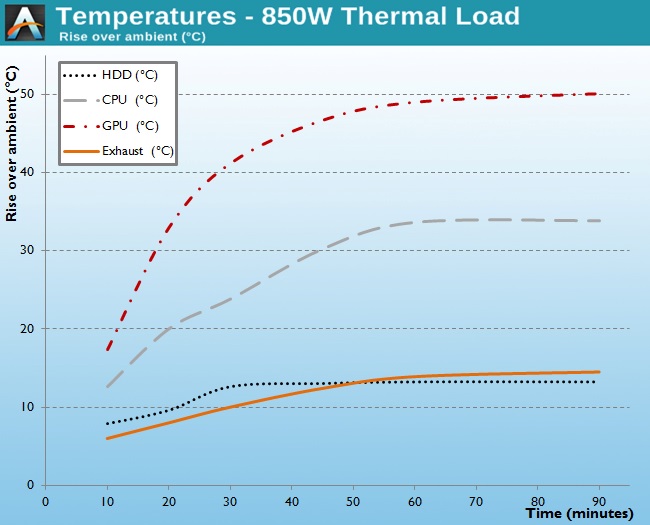
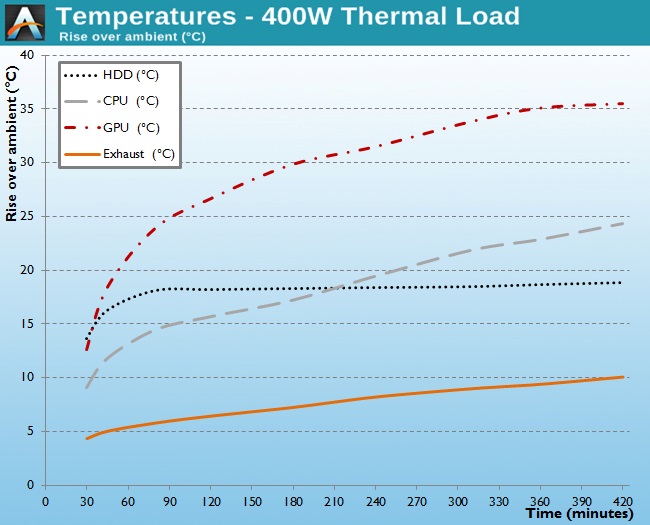
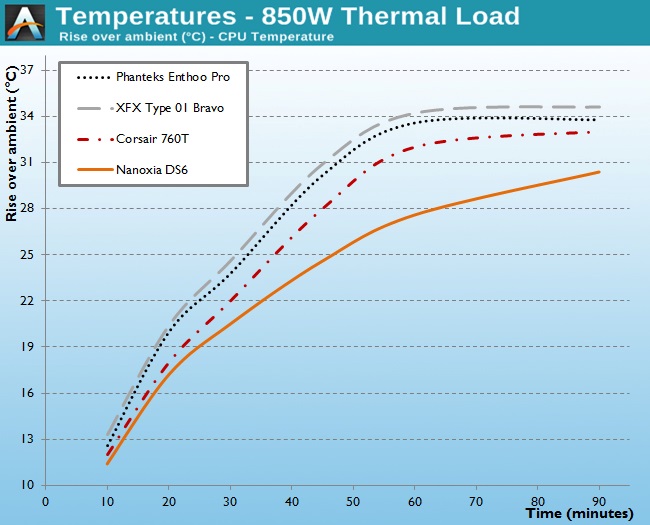
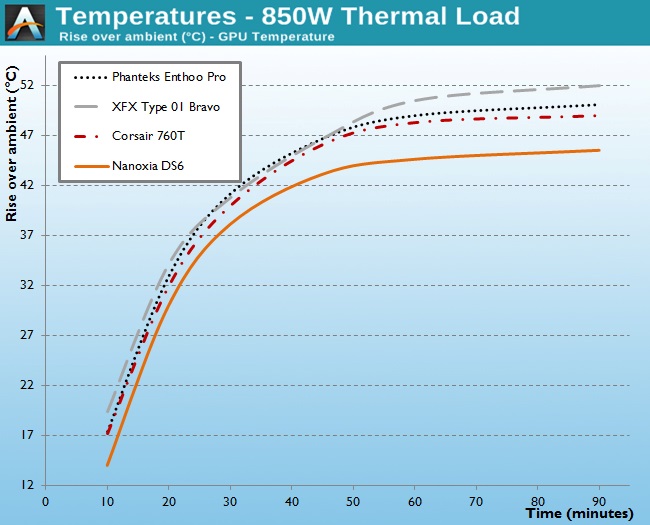
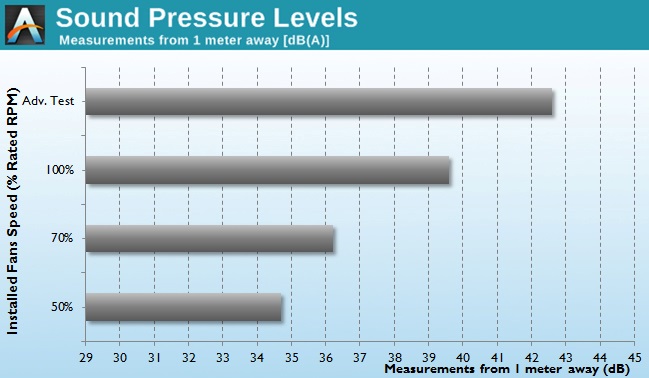








50 Comments
View All Comments
Antronman - Monday, March 30, 2015 - link
I would say that 4 5.25 bays is the maximum in this day and age. What do you need more for?4 can fit your DVD drive, an OC Panel (if you have one) and fan controller. More is just excessive.
Ammaross - Monday, March 30, 2015 - link
Unless you wanted to have a 3x3.5" hot swap drive bay which takes up 2x5.25" bays on its own. You can get 5 in 4, 4 in 3, etc. as well. I know I have a 2-in-1 for 2.5" drives...aggiechase37 - Monday, March 30, 2015 - link
It's not excessive if you do video editing. Adobe recommends separate drives for OS, cache, source files, project files, and exports. And assuming that you are going to RAID a few drives for something like your exports/project files, we can easily start eclipsing 6+ drives in a system. My current setup is SSD for OS, SSD for cache, SSD for source files, and 3xHDD in RAID 5 for projects/exports. My only complaint is I wish I had more sata ports.Antronman - Monday, March 30, 2015 - link
@AggieBut this is 5.25" bays.
@Ammaross
Alright, if you want/need hot swap docks then sure, you could use more.
Dug - Monday, March 30, 2015 - link
Or you can buy a $5 ext for the 8pin power cord.Flunk - Monday, March 30, 2015 - link
For a longer 8-pin connector you just either need to buy a PSU with longer cables (they exist) or buy a brand that sells longer cables as an accessory. SilverStone, as an example sells longer and shorter cables, as well as custom individually wire-wrapped cables for their modular power supplies (and they all use the same type of cables). You can also get a universal 8-pin cable extender for a few bucks if all else fails.dark4181 - Monday, March 30, 2015 - link
The perspective on the box art is so so sooo bad.jabber - Monday, March 30, 2015 - link
It's hilarious isn't it.DanNeely - Monday, March 30, 2015 - link
Yeah, my first thought was that a trapezoidal case was at least something different; but then the gallery showed a standard box.Antronman - Monday, March 30, 2015 - link
It looks like somebody tried to make it in two point perspective but failed terribly.